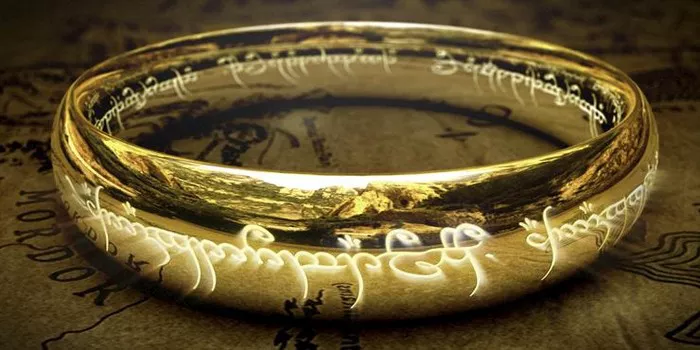Embarking on a literary journey through the pages of J.R.R. Tolkien’s magnum opus, “The Lord of the Rings,” invites us into the rich tapestry of Middle-earth. In this article, we delve into the heart of Tolkien’s masterpiece, exploring the intricate plot, vibrant characters, and profound themes that have captivated readers for generations. As we unravel the narrative threads, we seek to answer the fundamental question: What Is “The Lord of the Rings” Book About? This literary exploration aims to provide a comprehensive understanding of the epic saga that has left an indelible mark on the landscape of fantasy literature.
The Birth of Middle-earth: Tolkien’s Literary Endeavor
From Hobbits to Dark Lords: The Genesis of Middle-earth
J.R.R. Tolkien, a philologist and scholar, embarked on a literary journey that would birth one of the most influential works of fantasy literature. “The Lord of the Rings” emerged as a sequel to Tolkien’s earlier novel, “The Hobbit,” and evolved into a sprawling epic that delved into the depths of Middle-earth’s history, cultures, and mythologies.
Plot Synopsis: A Tale of Rings and Dark Forces
The One Ring: A Source of Power and Peril
At the heart of “The Lord of the Rings” lies the One Ring, a malevolent artifact created by the Dark Lord Sauron to control the other Rings of Power. The protagonist, Frodo Baggins, is entrusted with the perilous task of destroying the One Ring to prevent Sauron’s malevolent dominion over Middle-earth.
Fellowship of the Ring: A Diverse Ensemble on a Quest
Frodo’s journey is not undertaken alone. A diverse fellowship, including characters like Aragorn, Legolas, Gimli, and Gandalf, joins him on the quest to Mount Doom, the only place where the One Ring can be destroyed. Each member of the fellowship brings unique skills, backgrounds, and motivations, creating a dynamic ensemble that reflects the diversity of Middle-earth.
The Two Towers and The Return of the King: The Culmination
The narrative unfolds across three volumes: “The Fellowship of the Ring,” “The Two Towers,” and “The Return of the King.” In “The Two Towers,” the fellowship faces challenges and splinters into separate groups, each navigating different aspects of the unfolding conflict. The final volume, “The Return of the King,” culminates in the climactic Battle of the Pelennor Fields and Frodo’s ultimate confrontation with the power of the One Ring.
Themes and Symbolism: Exploring the Depths of Middle-earth
Power, Corruption, and Resistance: The One Ring as a Symbol
The One Ring serves as a powerful symbol throughout the narrative. Its corrupting influence and the relentless pursuit of power underscore themes of corruption and the moral complexities inherent in the struggle against malevolence.
Friendship, Sacrifice, and Hope: The Fellowship’s Bond
At its core, “The Lord of the Rings” celebrates the themes of friendship, sacrifice, and hope. The fellowship’s unwavering bond and their willingness to face insurmountable odds for the greater good showcase the triumph of unity over adversity.
Legacy and Impact: A Literary Masterpiece Endures
Literary Recognition: Awards and Critical Acclaim
“The Lord of the Rings” has garnered widespread critical acclaim and numerous literary awards. Its impact on the fantasy genre is immeasurable, influencing subsequent generations of writers and readers. Tolkien’s world-building, linguistic inventiveness and thematic depth have solidified his place as a literary luminary.
Cinematic Adaptations: Bringing Middle-earth to the Big Screen
The success of “The Lord of the Rings” extends beyond literature to the realm of cinema. Director Peter Jackson’s film adaptations, released between 2001 and 2003, introduced Tolkien’s narrative to a global audience, earning critical acclaim and box office success.
Conclusion: The Enduring Allure of Middle-earth
In conclusion, “The Lord of the Rings” is a monumental work that transcends the boundaries of traditional fantasy literature. Tolkien’s creation of Middle-earth, with its rich history, diverse cultures, and timeless themes, has left an enduring imprint on the literary landscape.
As readers journey through the pages of “The Lord of the Rings,” they embark on an odyssey filled with adventure, camaraderie, and the timeless struggle between good and evil. The narrative’s depth and complexity, coupled with its universal themes, ensure that Middle-earth continues to captivate and resonate with readers, standing as a testament to the enduring power of storytelling.
“The Lord of the Rings” is not merely a book; it is an immersive experience that invites readers into a world where the echoes of heroism, friendship, and the indomitable spirit of resistance reverberate across the ages. Tolkien’s masterpiece remains a literary treasure, inviting new generations to discover the magic of Middle-earth and explore the profound depths of this epic tale.

